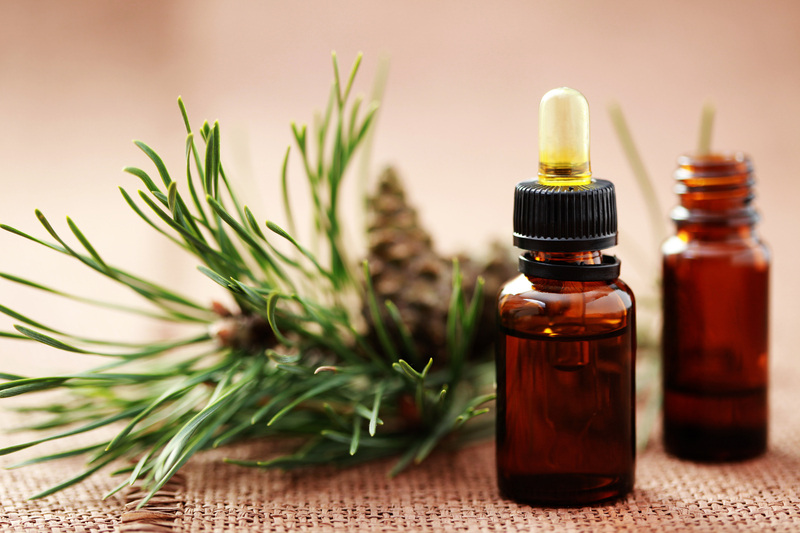Improving Air Quality to Foster a Healthy Living Environment
In our rapidly urbanizing world, air quality stands as a crucial pillar of overall well-being. With millions living amidst pollution--both indoors and outdoors--it is vital to understand the significant impact that air quality has on our daily lives. Efficient improvement of air quality not only enhances individual health but also supports a more productive, sustainable, and vibrant community. This comprehensive guide explores the importance, benefits, and practical strategies for improving air quality to foster a healthy living environment.
Why Is Air Quality Essential for a Healthy Living Environment?
Air quality refers to the cleanliness of the air we breathe, free from harmful substances like dust, smoke, volatile organic compounds (VOCs), and allergens. Poor air quality can result in significant health risks, including respiratory problems, cardiovascular diseases, allergic reactions, and even neurological issues. The Environmental Protection Agency (EPA) estimates that indoor air can be two to five times more polluted than outdoor air, making air quality improvement a pressing issue both inside and outside the home.
- Respiratory Health: Polluted air contains fine particles that can damage lung tissues and exacerbate conditions like asthma or bronchitis.
- Heart Health: Exposure to poor air quality raises the risk of heart attacks and strokes.
- Mental Well-being: Recent research links chronic exposure to air pollution with cognitive decline and mental health challenges.
- Productivity and Sleep: Cleaner air means better sleep quality and enhanced cognitive performance.

Main Sources of Indoor and Outdoor Air Pollution
Outdoor Air Pollution
- Vehicular Emissions: Cars, trucks, and buses emit nitrogen oxides and particulate matter.
- Industrial Activities: Factories and power plants release sulfur dioxide, carbon monoxide, and heavy metals.
- Agricultural Practices: Use of pesticides and burning fields pollute the air with harmful toxins.
- Natural Events: Wildfires, dust storms, and volcanic eruptions also degrade air quality.
Indoor Air Pollution
- Household Chemicals: Cleaning agents, pesticides, and paints release VOCs.
- Poor Ventilation: Traps indoor pollutants, leading to stale and unhealthy air.
- Combustion Sources: Tobacco smoke, wood stoves, and gas appliances add dangerous particles.
- Mold and Allergens: Dust mites, pet dander, and mold spores worsen air quality indoors.
Health Impacts of Substandard Air Quality
The effects of air pollution are far-reaching. Vulnerable groups, such as children, elderly, and those with chronic diseases, experience heightened sensitivity. Long-term exposure correlates with:
- Increased rates of asthma and respiratory infections
- Higher mortality rates from cardiovascular disease
- Elevated risks of cancer, particularly lung cancer
- Worsening of pre-existing conditions (e.g., COPD, allergies)
- Adverse pregnancy outcomes and developmental issues in children
The link between air quality enhancement and improved community health cannot be overstated. By prioritizing cleaner indoor and outdoor air, communities can reduce healthcare burdens and enhance quality of life for everyone.
Effective Strategies for Improving Air Quality Indoors
While outdoor air pollution is often outside our immediate control, there are numerous ways to improve indoor air quality and create a healthy living space. Here are some evidence-based recommendations:
Enhancing Ventilation and Filtration
- Open Windows: Allowing fresh air to circulate can dilute indoor pollutants, especially when done regularly.
- Use Exhaust Fans: Kitchen, bathroom, and laundry area fans remove contaminated air and moisture.
- Install Air Purifiers: Devices with HEPA filters capture fine particles, pollen, dust mites, and even some bacteria and viruses. Activated carbon filters are effective for odors and chemical pollutants.
- Maintain HVAC Systems: Regularly changing air filters in heating and cooling units helps trap airborne contaminants.
Adopting Healthier Cleaning Practices
- Choose low-VOC or non-toxic cleaning products and store chemicals in sealed containers.
- Dust and vacuum regularly using a vacuum with a HEPA filter.
- Avoid air fresheners and incense which often release additional VOCs.
Managing Moisture and Combustion Pollutants
- Use dehumidifiers in damp areas to prevent mold formation.
- Repair leaks promptly to reduce moisture levels.
- Prohibit smoking indoors as it introduces hundreds of harmful compounds.
- Ensure gas appliances are in excellent working condition and vented correctly.
Utilizing Plants to Improve Indoor Air
While some research on air-purifying indoor plants is ongoing, integrating greenery such as spider plants, snake plants, and peace lilies can enhance aesthetics, boost humidity, and potentially reduce some airborne toxins.
Community-Level Solutions: Enhancing Outdoor Air Quality
For sustainable change, improving the broader air quality requires community involvement and policy support:
- Promote Public Transit: Reduces the number of vehicles on the road, cutting emissions significantly.
- Support Renewable Energy: Encourage the use of solar, wind, and hydroelectric power instead of fossil fuels.
- Green Urban Spaces: Planting trees and creating parks absorb pollutants and cool cities.
- Encourage Carpooling, Cycling, and Walking: Reduces both traffic congestion and air pollution.
- Support legislation on emission controls and industrial regulation for cleaner air.
- Promote education: Public awareness campaigns about the dangers of air pollution foster responsible habits.
How to Monitor Air Quality in Your Environment
Keeping air quality at optimal levels involves regular monitoring. Here's how individuals and communities can assess their air:
Using Air Quality Index (AQI) Resources
- Check AirNow or local environmental agencies for real-time air quality readings.
- Download smartphone apps that alert you to hazardous air quality days.
- Set up home air quality monitors to measure levels of particulate matter (PM2.5, PM10), carbon dioxide, carbon monoxide, and humidity.
Interpreting Air Quality Data
- Green (0-50): Good--Air quality is considered satisfactory with little or no risk.
- Yellow (51-100): Moderate--Acceptable air quality but some pollutants may concern sensitive individuals.
- Orange or Higher (101+): Unhealthy--Sensitive groups or the general public may experience health effects.
Take Action Based on Data
- Limit outdoor exercise or activities during high-pollution alerts.
- Use N95 masks if venturing outside during poor air quality episodes such as wildfires.
- Keep doors and windows closed to prevent outdoor air from entering.
Technological Innovations for Cleaner Air
Advancements in technology are transforming how we manage and improve air quality:
- Smart Air Purifiers with IoT: Devices can adjust settings based on real-time pollutant levels and send alerts to homeowners.
- Green Building Materials: Low-emission paints, insulation, and flooring reduce indoor chemical exposure.
- Urban Air Sensors and Networks: Help cities identify pollution hotspots and take targeted action.
- Electric Vehicles and Charging Infrastructure: Rapid adoption can dramatically reduce citywide emissions.
- Air Scrubbing Technology: Used near factories and busy roads to absorb harmful gases.
Creating a Personalized Action Plan for Healthier Air
Improving air quality and fostering a healthier living environment starts with your choices. Here's how you can make a difference:
- Assess Your Space: Observe sources of pollution in your home or office.
- Make Sustainable Choices: Switch to natural cleaning agents, minimize use of aerosols, and ban smoking indoors.
- Invest in Air Quality Monitors and Purifiers: Equip your space with reliable devices and replace filters regularly.
- Go Green: Add air-purifying plants and advocate for green spaces in your community.
- Stay Informed: Check AQI reports and modify outdoor activities accordingly.
- Work with Neighbors: Form local advocacy groups and petition for cleaner industries or more green infrastructure.

Conclusion: The Path to a Healthier Environment Through Better Air Quality
The quest for improving air quality to foster a healthy living environment is a collective journey, benefiting both present and future generations. By understanding pollution sources, leveraging innovative solutions, and adopting healthier daily habits, each of us can play a pivotal role. Cleaner air not only means a stronger body and mind but also a more resilient, prosperous, and harmonious community. Take the first step today and inspire those around you to breathe easier and live better!
Frequently Asked Questions on Air Quality Improvement
Q1: What are quick ways to improve indoor air quality?
Open windows for cross-ventilation, use HEPA filters in your HVAC system, avoid smoking indoors, and limit the use of chemical-based household products.
Q2: How do I know if my indoor air quality is poor?
Common signs include frequent coughing or sneezing, persistent odors, visible mold, and increased allergy symptoms. Air quality monitors provide immediate data.
Q3: Can houseplants really purify indoor air?
While some plants can remove small amounts of toxins, they are best used as complementary solutions--not substitutes for ventilation and filtration systems.
Q4: What policies help improve outdoor air quality?
Emission controls, investment in clean energy, urban green planning, and stricter industrial regulations all contribute significantly to cleaner air at the community level.
Q5: Why is regular air quality monitoring important?
Monitoring helps you make timely decisions, such as staying indoors on high-pollution days, using air purifiers, and identifying possible problems with your environment.
Want to learn more about keeping your home healthy? Read our article on the top ways to improve your indoor environment.
Every breath matters--start your journey to improved air quality and a healthier living environment today!

